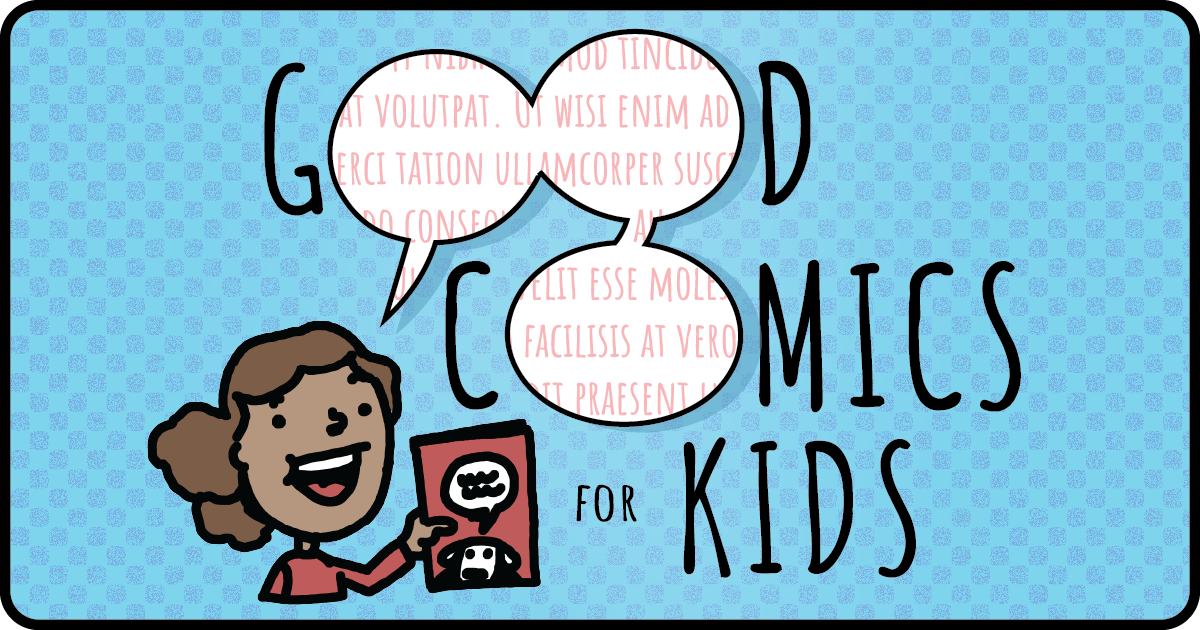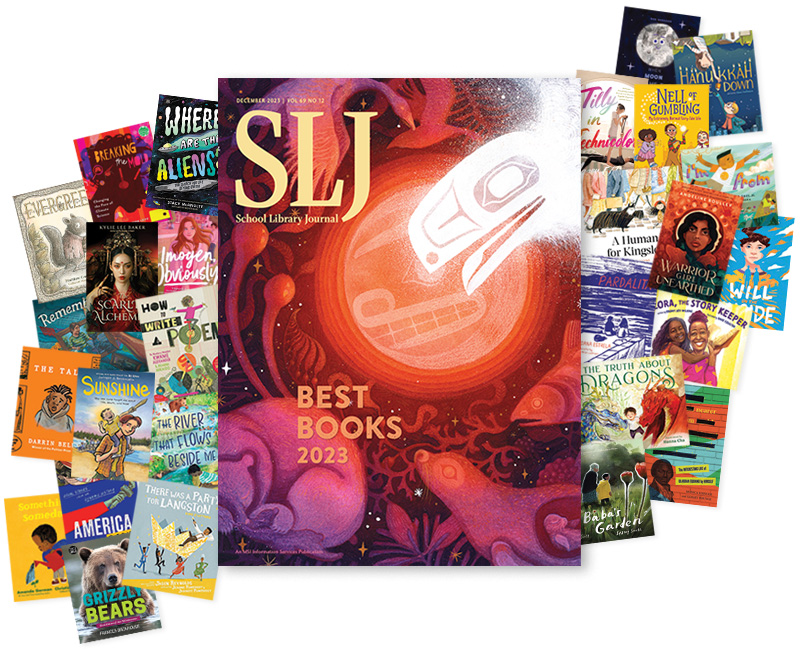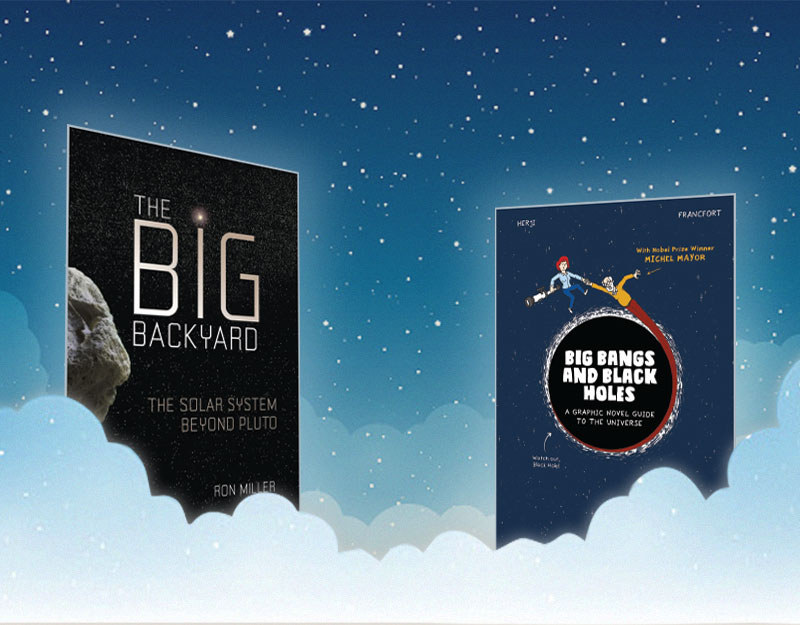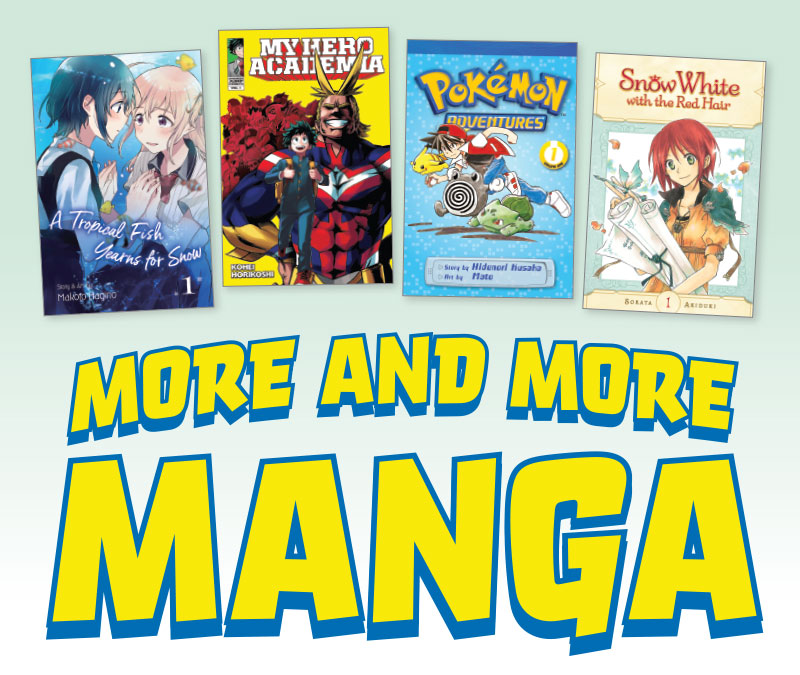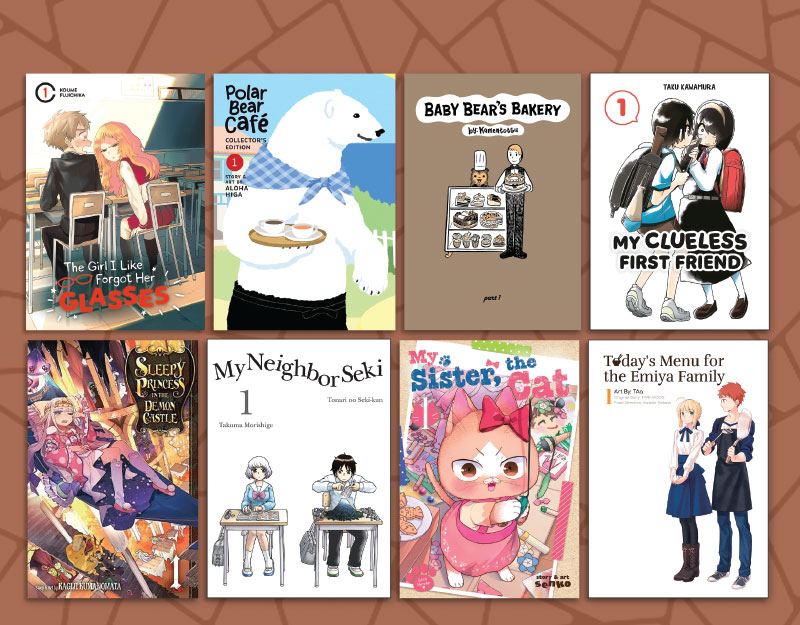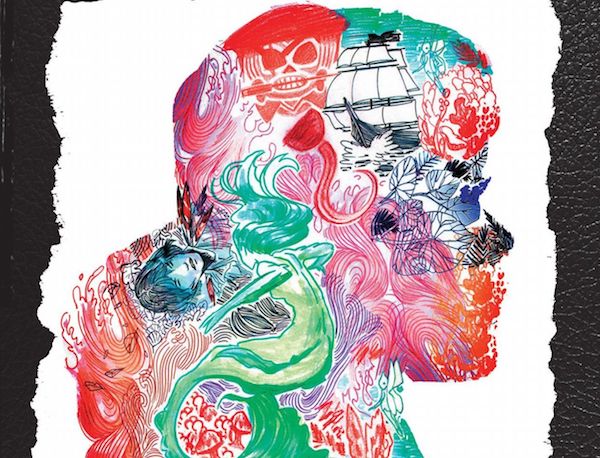
Teens, Graphic Novels, and Mental Health: An Interview with Dr. Jennifer Jenks
 I recently wrote an article on graphic novels and mental health for School Library Journal, and one of the people I spoke to while researching it was Dr. Jennifer Jenks, MD, a psychiatrist who treats teenagers as well as children and adults. She had many interesting things to say about the broader issues of teens, mental health, and how reading plays into that, so I am presenting the interview (which was conducted via e-mail) in full. I want to thank Dr. Jenks for taking the time to offer such complete and thoughtful answers.
I recently wrote an article on graphic novels and mental health for School Library Journal, and one of the people I spoke to while researching it was Dr. Jennifer Jenks, MD, a psychiatrist who treats teenagers as well as children and adults. She had many interesting things to say about the broader issues of teens, mental health, and how reading plays into that, so I am presenting the interview (which was conducted via e-mail) in full. I want to thank Dr. Jenks for taking the time to offer such complete and thoughtful answers.
Do you feel that most teens (under 16, say) have a good understanding of mental illness and how it can be treated?
I definitely don’t think most do. Mental health is not something taught in school. Sometimes a school will do a presentation about, say, suicide, but overall there is no good, reliable source for teenagers to access. I wish that health classes, which often are taught by coaches, and which usually have very few state-mandated guidelines about what does need to be treated, focused on teaching about mental health and giving kids good coping strategies, at least by middle school. Increasingly, kids are getting their information from other kids or from media. My guess is that most kids would say that mental illness is treated by therapy or medications, which is actually pretty true.
ADVERTISEMENT
ADVERTISEMENT
 Do they have access to good sources of information?
Do they have access to good sources of information?
Potentially, yes. The internet is a great place to get information about anything. But it is a mixed bag. I just gave a presentation about self-injury, and the internet, not surprisingly, is both a tremendously helpful database of information and even support, but it is also unreliable, and the sources of information are too divergent to say that they are “good sources,” which they often are, or “bad sources,” which they also can be. Aside from that, there are harmful sources of information, such as Tumblr posts that teach ways of keeping an eating disorder or cutting a secret. So the information out there, particularly when it comes to issues around mental health, can be a very mixed bag. While some internet behaviors could help a teen feel more connected with others (by sharing their own experiences and/or reading about others’), there are risks as well. Exposure to information, depending how it is depicted, can trigger urges to engage in self-harming behaviors, can glamorize mental illness, and can suggest that the self-harm itself is actually the cure, not the problem.
Are you concerned that giving teens graphic novels about mental illness could lead to self-diagnosis? Could that be problematic?
Self-diagnosis is definitely something that happens, but I wouldn’t be overly concerned that graphic novels would make kids diagnose themselves. In fact, I would think that seeing mental illness (anorexia, depression, psychosis) through the eyes of a fictitious character would give a kid a better sense of “that sounds like me” than a list of symptoms that they might find on Wikipedia. But to address self-diagnosis more broadly, a couple of years ago, I worked at a day treatment program for adolescents. These were kids who either had just gotten out of the hospital, or who were in outpatient treatment that wasn’t enough and needed the program to avoid something like a hospitalization. A few of us noticed that there were two types of kids: the ones who insisted they were fine (even though they were struggling) and the kids who came in with a long list of diagnoses, most of which they had given themselves: “I’m bipolar 2, eating disorder NOS, PTSD, BPD . . . .” We felt like the former did much better overall because they wanted to see themselves—and have others see them—as healthy and intact. The latter type were kids who were consolidating their identity (one of the most important developmental tasks of adolescence) around pathology, and that was always really concerning.
 And yet . . . I will say something very contrary to that. For some people—kids or adults—having a place to see someone like themselves could be so helpful, so empowering, and so validating. I still do therapy with a patient in her early 20s who I have seen since she was going into freshman year of high school. She has pretty severe OCD. Every once in a while, she texts me a meme related to OCD, and to her it is just thrilling to feel like someone else has the same thoughts she does, who absolutely gets it. Reading these graphic novels, it struck me how powerful and helpful it would be for her to see a character who thought like she did. So basically, while there is the risk of kids seeing characters with mental illness and taking it on, there could be real benefits to people who have true mental illness who see the same characters and feel some hope, or at least some shared experience.
And yet . . . I will say something very contrary to that. For some people—kids or adults—having a place to see someone like themselves could be so helpful, so empowering, and so validating. I still do therapy with a patient in her early 20s who I have seen since she was going into freshman year of high school. She has pretty severe OCD. Every once in a while, she texts me a meme related to OCD, and to her it is just thrilling to feel like someone else has the same thoughts she does, who absolutely gets it. Reading these graphic novels, it struck me how powerful and helpful it would be for her to see a character who thought like she did. So basically, while there is the risk of kids seeing characters with mental illness and taking it on, there could be real benefits to people who have true mental illness who see the same characters and feel some hope, or at least some shared experience.
 Do you think reading about behaviors such as anorexia, cutting, or drugs will make teens more likely to try those things themselves—even if the protagonist of the story overcomes those problems?
Do you think reading about behaviors such as anorexia, cutting, or drugs will make teens more likely to try those things themselves—even if the protagonist of the story overcomes those problems?
In the presentation I just made at an eating disorders conference, I talked about self-harm (like cutting) in adolescence. We know that these behaviors are highly socially influenced. At the same time, though information gained from friends or the media (and I would include graphic novels) could make these types of behaviors more likely, the acts themselves would stem from very real emotional needs. In other words, though a graphic novel might entice an adolescent to try something risky, that would only be true for the same teen who was vulnerable to that in the first place. A psychologically intact and healthy adolescent would not be expected to read something about anorexia or cutting and suddenly be drawn toward it.
What we know about teenagers and “contagion” around self-harm or suicidal behaviors is that, while kids may be more likely to be friends with kids like them, those kids may self-select for friends with the same emotional vulnerabilities, so they may be more drawn toward these topics. A kid who picks up a graphic novel about restriction of food, or about cutting, may be more likely to try them, but it would take more to keep that behavior as more than a novelty. For the behaviors to “stick,” it would take much more than a graphic novel to create de novo these behaviors.
Do you think that reading about suicide attempts increases teens’ likelihood to attempt suicide themselves?
I suppose there could be a correlation, but I would find it astonishing to think that anyone would actually attempt suicide based on reading about one. I say this with the caveat that there often is an increase in suicide rate in communities that have had a completed suicide (perhaps especially if by a teen). That said, attempting suicide is something that people do at the point of absolute desperation, and it seems highly unlikely to me that any graphic novel they could read would push them in that direction (with, perhaps, the exception, of one meant to elicit that urge, and librarians and teachers would never select that type of publication, and, also, I hope they aren’t out there).
 Do you think reading about other peoples’ experiences with mental illness is helpful to teens who have a friend or relative with mental illness?
Do you think reading about other peoples’ experiences with mental illness is helpful to teens who have a friend or relative with mental illness?
ADVERTISEMENT
ADVERTISEMENT
I could absolutely see how this would be helpful. It is a way of making people who struggle with mental health issues more accessible and more real. Conveying this in the packaging of a graphic novel could be a very effective way of reaching kids. I know that teenagers often find it difficult to voice their own feelings. When I do therapy and say things like, “Some kids tell me that they feel jealous that their father is dating someone new,” they may be able to access thoughts and feelings true to them that they either weren’t aware of, or were having trouble sharing. In that vein, I could see a graphic novel being a helpful inroad to helping a teen tap into thoughts or feelings that felt too risky to experience on their own.
What advice would you give to teachers and librarians about providing graphic novels about mental illness to this age group? Do you have specific advice for specific ages?
The best advice I could offer would be to consider the overall tone of the graphic novel-not necessarily to censor based on content, but to consider what the experience of the adolescent reader would be. It would be helpful if graphic novels had a message of recovery (but not in a preachy, “After School Special”—and I say this totally dating myself!—way) as opposed to glamorizing concerning behaviors, like self-harm, suicide, and eating disorders. I would not support graphic novels being used as mental health propaganda, but rather a careful and thoughtful consideration of what the takeaway message might be, especially for someone who is not yet an adult.
 In terms of specific ages, a general guideline is to give kids age-appropriate information, even as it pertains to them personally. For example, if a child were adopted after being found in a dumpster after being abandoned by a young mother with substance abuse issues who was a sex worker, it would be important that, at some point in adolescence, everything were disclosed, because developing an identity is one of the major tasks of adolescence. That said, before adolescence, information should be given on an age-appropriate basis. So a 5-year-old might be told, “You birth mother was too sick to take care of you, so she made sure to find a family that could.” A 10-year-old might be told, “Your mother was struggling with alcohol or drugs, and it made her unable to take care of you, as much as she might have wanted to.” Etc., until at some point the child knows the full story. I use this example to show that versions of the same “truth” can be shared at any age, but with a different amount of details. I could see a graphic novel depicting an elementary-school-aged kid who has a parent with depression (with a readership around that age), one about a kid struggling with body image and eating disorder (aimed for a middle school or YA audience), one about a transgendered kid that would appeal to a YA audience.
In terms of specific ages, a general guideline is to give kids age-appropriate information, even as it pertains to them personally. For example, if a child were adopted after being found in a dumpster after being abandoned by a young mother with substance abuse issues who was a sex worker, it would be important that, at some point in adolescence, everything were disclosed, because developing an identity is one of the major tasks of adolescence. That said, before adolescence, information should be given on an age-appropriate basis. So a 5-year-old might be told, “You birth mother was too sick to take care of you, so she made sure to find a family that could.” A 10-year-old might be told, “Your mother was struggling with alcohol or drugs, and it made her unable to take care of you, as much as she might have wanted to.” Etc., until at some point the child knows the full story. I use this example to show that versions of the same “truth” can be shared at any age, but with a different amount of details. I could see a graphic novel depicting an elementary-school-aged kid who has a parent with depression (with a readership around that age), one about a kid struggling with body image and eating disorder (aimed for a middle school or YA audience), one about a transgendered kid that would appeal to a YA audience.
But in general, I think that librarians and teachers are incredibly capable at looking at novels, stories, and other forms of writing with a considerate eye on how kids will respond and react. YA writers do a good job of this, too. I imagine that the authors of graphic novels would as well; the unique challenge would be, in my opinion, that a comic-looking book is something that is so frequently associated with childhood (the comic books that adults remember reading as kids) that it could be that a graphic novel intended for a particular audience (say, adults) might be something that a pre-teen or teenaged kid would be drawn toward, even if the content were not developmentally appropriate. But that is true of all books. The same kids who read Judy Blume books (again, dating myself) like “Are You There God, It’s Me, Margaret?” could read “Tiger Eyes” and the contents of that would be beyond what the same readership should be exposed to. Kids, and I imagine that this is increasingly true the older they get, can get a hold of almost anything online, if not in libraries or their classrooms. So the idea that someone could write and illustrate a well-thought-out graphic novel that would be helpful to read and experience could be a significant improvement on what they might find online on the same topic.
Filed under: Graphic Novels, Interviews, Young Adult
About Brigid Alverson
Brigid Alverson, the editor of the Good Comics for Kids blog, has been reading comics since she was 4. She has an MFA in printmaking and has worked as a book editor, a newspaper reporter, and assistant to the mayor of a small city. In addition to editing GC4K, she is a regular columnist for SLJ, a contributing editor at ICv2, an editor at Smash Pages, and a writer for Publishers Weekly. Brigid is married to a physicist and has two daughters. She was a judge for the 2012 Eisner Awards.
ADVERTISEMENT
ADVERTISEMENT
SLJ Blog Network
One Star Review, Guess Who? (#202)
Review of the Day: My Antarctica by G. Neri, ill. Corban Wilkin
Parsing Religion in Public Schools
Take Five: LGBTQIA+ Middle Grade Novels
ADVERTISEMENT

